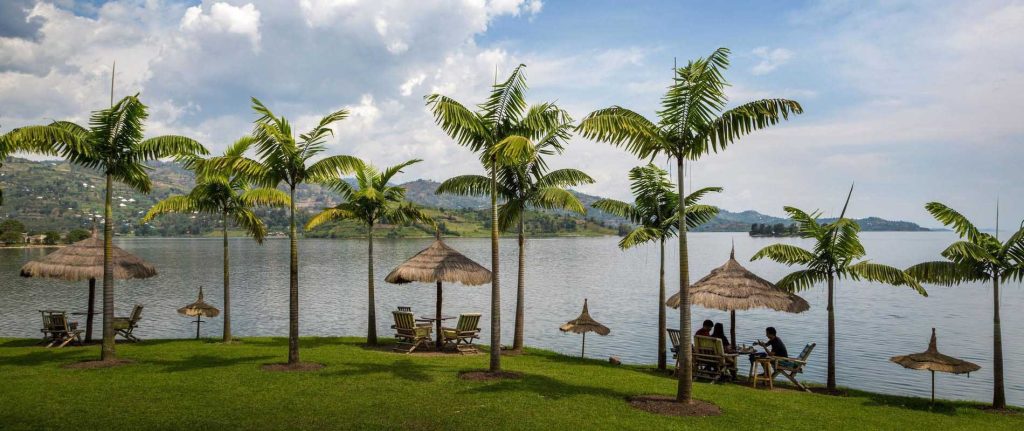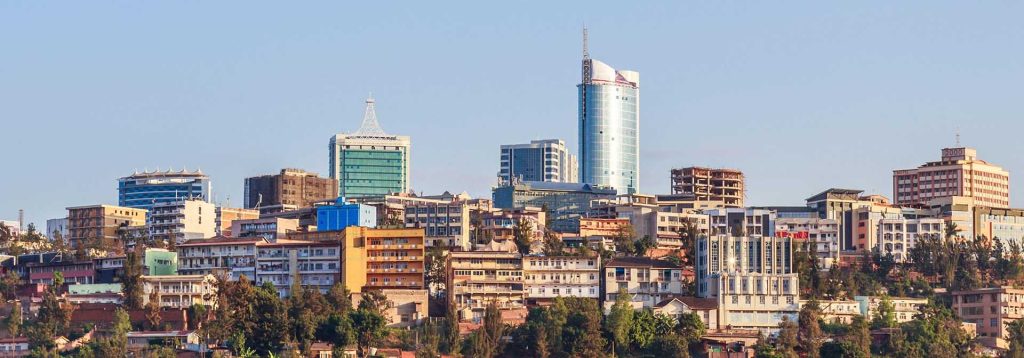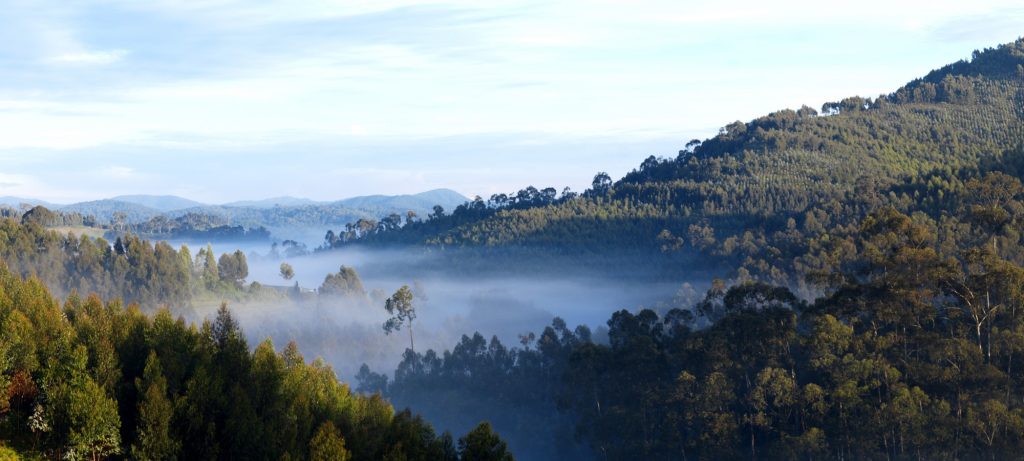Rwanda Top Destinations
Volcanoes National Park
Located in the far northwest of Rwanda, the Parc des Volcans safeguards the steep slopes of this magnificent mountain range, which is the habitat of the rare mountain gorilla, as well as a diverse range of montane ecosystems, including evergreen and bamboo forests, open grasslands, swamps, and heaths.
Embarking on an exhilarating trek through the cultivated foothills of the Virungas provides breathtaking panoramic views in every direction. Suddenly, the trail leads into the national park, immersing trekkers in the enchanting intimacy of the rainforest, teeming with the vibrant calls of birds and the chatter of the elusive golden monkey. The forest floor is scattered with fresh tracks of the mountains’ elusive buffalo and elephant populations. Through breaks in the forest canopy, glimpses of the majestic peaks can be seen, easily accessible and among the highest in Africa, beckoning adventurers to ascend.
The bustling market town of Ruhengeri is nestled at the base of the Virungas, offering a memorable setting. Just outside the town, the natural bridge at Musanze, formed by solidified lava, stands as a captivating relic of the volcanic activity that shaped this picturesque area. Lakes Burera, Ruhondo, and Karago, which are rarely visited but incredibly beautiful, are also within easy reach of Ruhengeri. The town provides a range of reasonably priced small hotels and guest houses, including the recently renovated Gorilla’s Nest hotel. Alternatively, visitors can choose to stay in Gisenyi or Kigali and make a day trip to the Parc des Volcans and Ruhengeri with an early start.
By Road:
Volcanoes National Park is situated in the quaint village of Musanze, formerly known as Ruhengeri. This village is easily accessible by public transportation from Gisenyi, Kigali, or the airport. The journey to the national park takes approximately 2 hours, allowing visitors to engage in gorilla tracking on the same day and return to Kigali afterwards. To ensure a successful gorilla trekking experience, it is essential to arrive at the ORTPN headquarters in Kinigi, located at the park entrance, by 7:00 am. Therefore, if you plan to embark on a one-day gorilla trek, you must wake up early to commence your journey and ensure punctuality. It is important to note that there is no public transportation available from Musanze to the park headquarters in Kinigi.The Volcanoes National Park offers a variety of activities for visitors to enjoy. These include gorilla trekking, hiking the Karisimbi volcano which stands at an impressive 3,800 meters, embarking on a one-day hike up Mount Bisoke volcano, exploring the Dian Fossey Memoratorium, and taking in the breathtaking views of the twin lakes of Ruhondo and Bulera.
The Volcanoes National Park offers favorable weather conditions for outdoor activities all year round. However, there are certain weather patterns that visitors should be aware of. The area experiences extended periods of rainfall, heavy downpours, frequent mist, and cool temperatures.
At the national park’s Headquarters, which is located at an altitude of approximately 2400 meters, the average day temperatures range from 11 to 19 degrees Celsius. As one climbs higher on the slopes of the volcanoes, the air becomes colder. It is not uncommon to experience freezing temperatures in the early morning at around 3000 meters and higher altitudes. In fact, the summit of Mt. Karisimbi is often covered in a cap of snow.
The climate in the area can be divided into four seasons. The long dry season typically lasts from mid-June to mid-September. This is followed by short rains from October to December, and then a short dry season in January and February. The long rains begin in March and continue until the end of May. However, it is important to note that rain can occur at any time throughout the year in the Virunga region. The volcanoes themselves are often enveloped in mist.
Rainfall is not evenly distributed across the Virunga range. The western volcanoes, such as Mt. Karisimbi and Mt. Visoke, receive more rainfall compared to the eastern ones, including Mt. Sabyinyo, Mt. M’Gahinga, and Mt. Muhabura.
The highest amount of precipitation occurs at elevations around 2500 to 2700 meters, which is close to the lower boundary of the Volcanoes National Park. As one goes higher, the rainfall decreases significantly, and the highest slopes of the volcanoes are relatively drier. However, they are often obscured by thick cloud formations. The annual rainfall at the summit of Mt. Karisimbi is approximately 940 mm, which is about half the amount of rainfall at 2500 meters.
The Virunga forest plays a crucial role in regulating the climate and acting as a water reservoir. It acts like a sponge, providing a regular water supply for hundreds of thousands of people in Northwest Rwanda.



